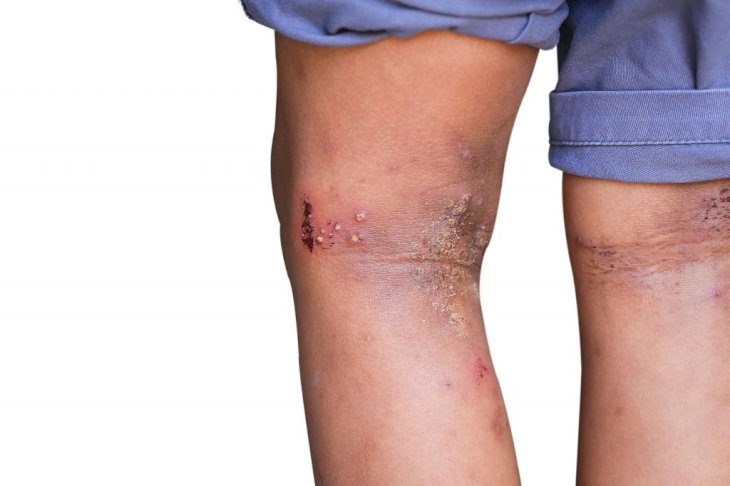
A Guide To Treating Psoriasis On Deeper Skintones
There are plenty who suffer from psoriasis, and while the symptoms are typical for people with lighter skin tones, those with deeper skin tones can often be misdiagnosed! So why are doctors getting it so wrong?
The answer is simple, most medical textbooks may be updated every few years, but they’re not adding any new information. Textbooks are riddled with typical presentations on lighter skin tones, and if available, there may be a few notes on deeper tones.
Doctors who have experience with patients of color are coming forth and helping people who may have been misdiagnosed. If you feel like your doctor is missing out on something, it’s an opportunity to ask questions in the interest of your wellbeing.
How Does It Differ From Typical Presentation?

Shutterstock
Typically psoriasis appears as thick red plaques with silvery scales; however, this presentation is quite obvious for lighter skin tones. Those with deeper skin tones don’t have these typical presentations because the red is difficult to see in their tones.
For deeper tones, psoriasis presents as purple to brown colored plaques, with grey or white scales. It appears as patches with distinct borders of flaking skin that’s dry and appears in patches in areas like the scalp, elbows, and knees.
The patches can feel itchy, painful, and maybe pus-filled. In severe cases, the patches are widespread over the body, and people with deeper skin tones present with widespread patches around the body.
Diagnosing Psoriasis On Deeper Skintones

Photo by Mathilde Langevin on Unsplash
Diagnosing psoriasis on deeper skin tones can be difficult if you don’t know what to look for; purple to brown discolored, scaly patches are typical presentation for it. Research and education are necessary because it shows that African Americans are more affected by psoriasis on the scalp than lighter-skinned people and helps with misdiagnosis.
Misdiagnosis can also occur because the typical presentation on deeper tones is non-specific; this means that psoriasis can easily be mistaken for skin conditions like eczema. In these cases, if your health care provider is uncertain, they should do a skin biopsy to make the correct diagnosis and help you get onto the right treatment plan!
Treatment

Shutterstock
Your treatment is not dependent on the color of your skin, so you should use topical creams like steroids and anti-inflammatories to manage psoriasis when it flares up. Many of the products require you to have a prescription, but over-the-counter creams containing aloe vera and salicylic acid are available.
If psoriasis affects a significant amount of the body and topical treatments are rendered impractical, there are other options like oral medications or injections. These require a prescription and include a drug like Humira, which treats moderate to severe conditions.

Shutterstock
Phototherapy involves exposure to UV light to target the inflammatory response. Most people might not like light therapy because it can cause dark marks to become more noticeable, but different types of light cause more minor discoloration.
Other treatments include lifestyle changes like washing your hair with medicated shampoo and avoiding triggers like stress that can flare up the condition. If you’re an African American who has psoriasis on the scalp, you should try to wash your hair with a medicated shampoo once or twice a week.